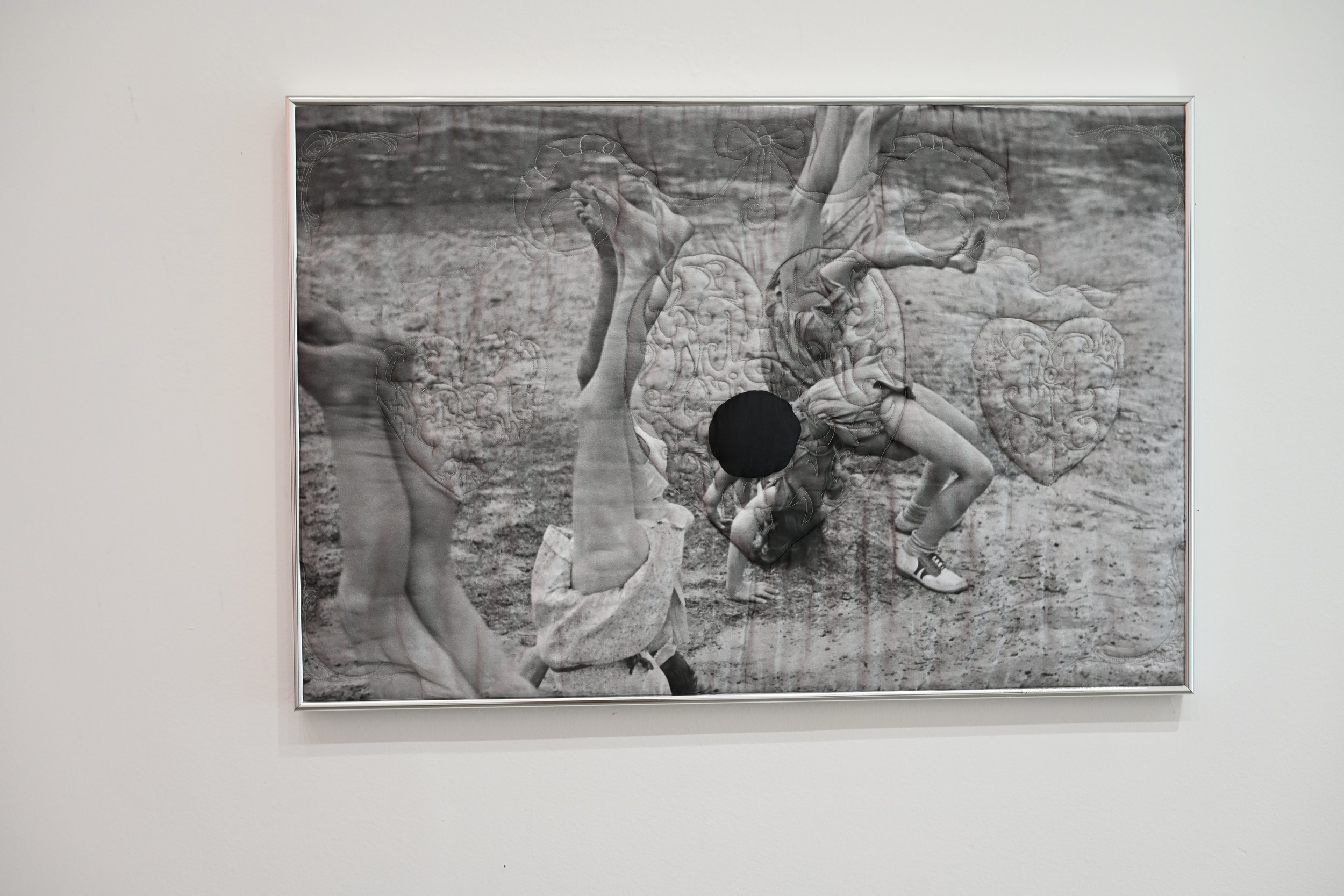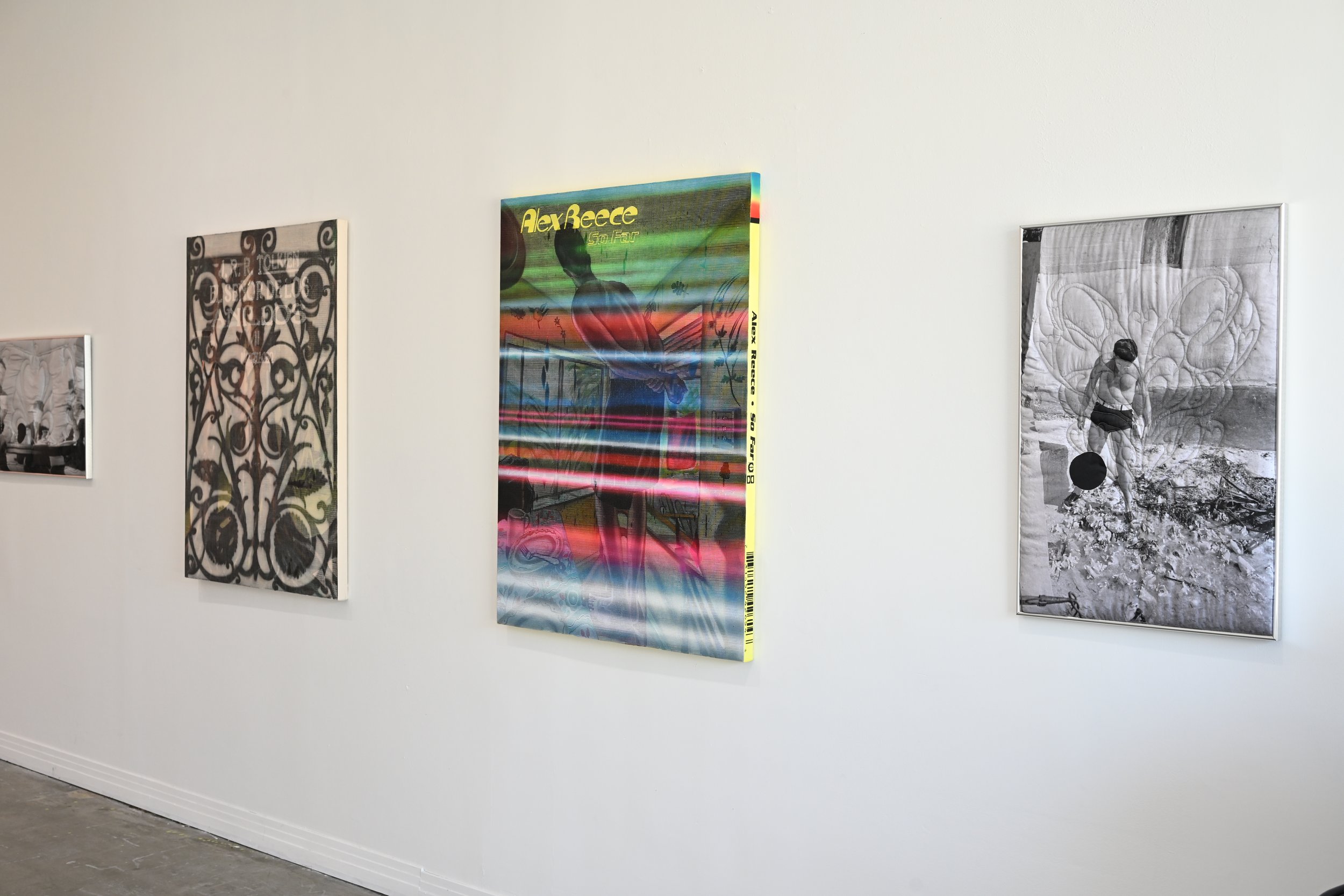Afterimage
rel robinson & Robert Falco
April 27, 2024- June 15, 2024


















af·ter·im·age
/ˈaftərˌimij/
noun
1. an impression of a vivid sensation (especially a visual image) retained after the stimulus has ceased.
“An afterimage is an image that continues to appear in the eyes after a period of exposure to the original image.”
Melrose Botanical Garden is pleased to present Afterimage, a duo exhibition featuring the works of rel robinson & Robert Falco. For both artists, the photograph is a conceptual matrix, the site of a multi-laden discourse between memory and document.
In this new body of work, rel robinson uses a selection of rejected Farm Security Administration images personally hole punched by Roy Stryker, who founded the New Deal-era program. Stryker used the hole punch as a redactive tool, making images that deviated from his preconceived aesthetic unprintable. Using the voided images as substrate robinson quilts designs informed by 16th and 17th century Grotesque engravings, Art Deco motifs, and contemporary product branding and tattoos. While engaging with quilting as a storytelling tradition, robinson reconstitutes the Stryker negatives in an effort to examine our colloquial desire for documentation, the way we use photographs and images to confirm and deny the narratives of our lives, and the means by which the past is cannibalized by the present tense.
Robert Falco delves into the realm of the personal and the digital, crafting layered paintings that evoke the evasive nature of memory. With the use of airbrush, acrylics, vinyl, and mesh masking Falco creates multi-veiled paintings, both in form and concept. His process involves painting in an additive and subtractive methodologies, mirroring the fragmented manner in which we recall our past with his process and composition. In the studio, Falco will paint an initial image onto canvas, then cover the finished painting with mesh and begin a new image on top, finally removing the mesh to reveal a double or sometimes triple “exposure”. These successive layers of paintings are made of small pixel-like squares from the meshes’ woven texture, reminiscent of digital screen. These paintings come to reflect the process of cognition itself. Like the sensation of recollection, the simultaneous images compete for your total attention while details are lost to the periphery.
